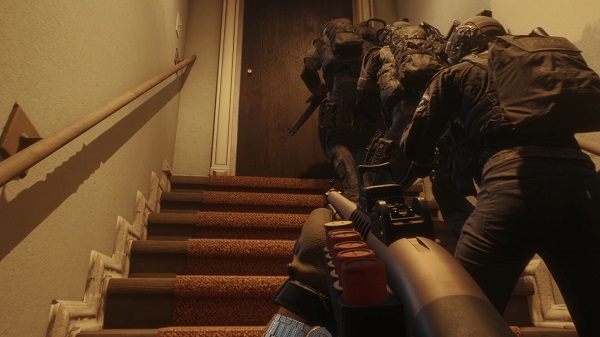Popular Now
In the world of tactical shooters, Ready or Not has emerged as a standout title, praised for its gritty atmosphere, high-stakes decision-making, and near-uncompromising attention to realism. Developed by VOID Interactive, the game invites players into the boots of SWAT operatives tasked with diffusing volatile situations, often under immense pressure. But with that realism comes an inherent challenge—how do you keep a game fun and accessible without sacrificing the immersive realism it promises? This article explores that tension in detail, dissecting how Ready or Not navigates the fine line between hardcore simulation and engaging gameplay.
The Philosophy of Realism in Ready or Not

From its earliest development stages, VOID Interactive made it clear: Ready or Not wasn’t meant to be a casual shooter. The game embraces real-world tactics, realistic weapon handling, and procedurally unpredictable threats. This philosophy is more than skin-deep—it’s embedded into every line of code, every hallway layout, and every hostage situation.
But realism isn’t just about difficulty; it’s about authenticity. You don’t reload like in Call of Duty, you check your magazine. You don’t sprint and gun down enemies Rambo-style—you move cautiously, call out commands, and hesitate before firing. That commitment gives Ready or Not its soul, but it also introduces unique friction points in gameplay, especially for newcomers.
Tactical Pacing vs. Player Expectations
Most gamers—conditioned by years of fast-paced shooters—come into Ready or Not expecting a similar rhythm. But this is a game where rushing gets you killed. Pacing is deliberate, methodical, and punishing if ignored. This slow tempo is not just a design choice; it’s a core mechanic.
This creates a cultural divide: players used to kinetic gameplay often bounce off the game, frustrated by its lack of "flow." On the flip side, fans of tactical realism praise the game for forcing them to think, not just react. This design decision risks alienating a broader audience but rewards those who adapt with a rich, satisfying experience.
Realism in Enemy AI Behavior
Enemies Aren’t Just Targets
The AI in Ready or Not doesn’t behave like traditional video game enemies. Suspects will hide, fake surrenders, use hostages as human shields, and even flee the scene. This unpredictability mimics real-world standoffs and adds layers of complexity to every engagement.
The Pros:
-
Creates intense psychological pressure
-
Elevates the need for teamwork and communication
-
Encourages the use of non-lethal force
The Cons:
-
Occasional AI bugs break immersion
-
Difficulty spikes can feel arbitrary
While the AI often impresses, it sometimes misfires—literally and figuratively. Suspects occasionally behave in immersion-breaking ways, such as running into gunfire or glitching through doors, undercutting the realism the game works so hard to maintain.
Lethal Force and the Cost of Realistic Consequences

Ready or Not penalizes players for unjustified use of lethal force—even in high-stress situations where threats are unclear. Killing a suspect who was in the process of surrendering can fail a mission. Accidentally harming a civilian? Mission over.
This system reinforces discipline and restraint, emulating the real-life responsibilities of SWAT officers. However, it also introduces moments of deep frustration. In a split second, a suspect may reach for a weapon, and players must decide: do I shoot or risk dying? The realism here is undeniable—but is it always fun?
The Command System: Precision at a Price
Commanding Your Team in Chaos
One of Ready or Not's most immersive features is its squad command system. You can direct your AI teammates to breach doors, deploy flashbangs, arrest suspects, and secure evidence. On paper, it’s a tactical player’s dream.
Execution Issues
In practice, the system can be clunky. Commands are nested within radial menus, which are not intuitive in high-stress scenarios. AI teammates sometimes hesitate or misinterpret orders, leading to mission-critical errors.
This again shows the game's devotion to realism, but also its need for better UI/UX design. Real-life commands might be complex, but in a game setting, they need to be streamlined to avoid frustration.
Environmental Storytelling and Authenticity
The game’s environments—from seedy motels to opulent mansions—are meticulously detailed. VOID Interactive doesn't just build maps; it builds narratives. Each level tells a story, often without saying a word. Blood trails, broken doors, crying hostages—they all paint a picture of chaos that players must bring order to.
This environmental storytelling enhances immersion significantly. It doesn't just feel like a "map"—it feels like a crime scene. The realism isn’t limited to gameplay mechanics; it’s woven into the world itself.
Mission Design: When Realism Becomes Repetition
Despite the immersive environments, mission objectives can become repetitive over time. Most involve some combination of securing suspects, rescuing civilians, and collecting evidence. While this reflects the real-life duties of SWAT teams, it may not sustain long-term engagement for all players.
The tension lies here: realism often means doing the same job, over and over, with minimal variation. For fans of simulation, this is acceptable—even enjoyable. But for players seeking narrative progression or variety, it can become a sticking point.
Multiplayer and Cooperative Realism

Where the Game Truly Shines
Co-op mode transforms Ready or Not into something extraordinary. The slow pace and tactical focus become strengths when shared with friends. Real-time voice commands, planning breach strategies, and reacting to unexpected chaos all create emergent moments of brilliance.
Voice Integration
The use of VOIP, combined with procedural level design, turns each mission into a suspenseful chess match. Players naturally fall into roles—team leader, shield bearer, point man—and the realism becomes a bonding agent.
However, the lack of a robust matchmaking system and the steep learning curve can make finding a competent team difficult. Still, the experience is arguably the best way to play Ready or Not, especially for those craving realistic tactics.
Modding: A Realism Booster or a Crutch?
Mods have become a vital part of Ready or Not's ecosystem. From updated gun sounds to enhanced AI behavior, modders have pushed the game even closer to real-world accuracy. Some even argue that modded Ready or Not is the “true” version of the game.
While this speaks to the dedication of the community, it also raises questions: Should players have to rely on mods for realism improvements? And why aren’t some of these enhancements part of the base game? It’s a double-edged sword—mods expand the experience but also highlight what’s lacking in the vanilla version.
The Accessibility Dilemma
For all its commitment to realism, Ready or Not is not accessible to everyone. The steep learning curve, complex UI, and lack of onboarding make it a tough entry point for casual gamers. There’s no campaign mode or structured tutorial. You’re thrown into a mission and expected to adapt—or fail.
This keeps the experience pure for hardcore fans but limits its potential audience. As more players discover the game, the question becomes: can it evolve without compromising its core identity? Some updates have hinted at better tutorials and more intuitive systems, but progress has been slow.
Conclusion: The Cost and Reward of Authenticity
Ready or Not is a rare beast—unapologetically realistic, meticulously crafted, and deeply immersive. But that commitment to authenticity comes with a cost. Not everyone will enjoy its punishing difficulty, unpredictable AI, or complex command systems. Yet for those who crave realism, those very elements are what make the game shine.
The balance between realism and gameplay is a moving target. VOID Interactive has done an admirable job of walking that tightrope, even if it stumbles occasionally. Whether Ready or Not becomes a long-term tactical classic depends on how it addresses accessibility, refines its systems, and continues listening to its passionate community.
















